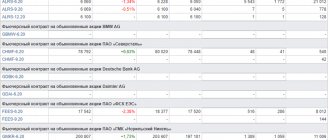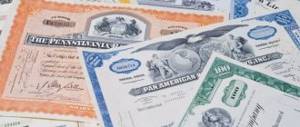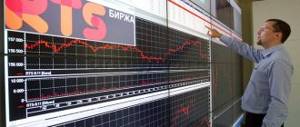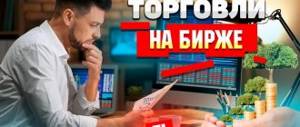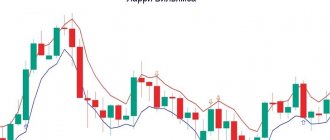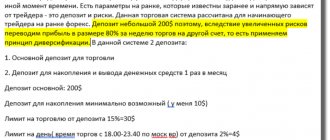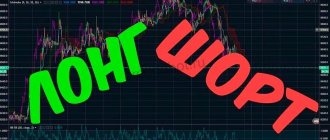Evening trading session on the main market of the Moscow Exchange
Dear Clients!
From June 22, 2021, trading will be launched during the evening trading session on the main market of the Moscow Exchange; transactions during the evening session will be made until 23:50 Moscow time.
For an investor, these are additional opportunities to implement trading strategies due to greater synchronization with world markets.
Operating hours on the main market of the Moscow Exchange
| Main session | Evening session | ||||||
| 09:30:00- 09:50:00 | 09:50:00- 09:59:59 | 10:00:00- 18:39:59 | 18:40:01- 18:50:00 | 18:50:00- 18:59:59 | 19:00:01- 19:04:59 | 19:05:00- 23:49:59 | |
| Glass T+2 | There are no auctions | Opening auction | Trading period | Closing auction | There are no auctions | Opening auction | Trading period |
| Incomplete lots | There are no auctions | Trading period | There are no auctions | Trading period | |||
- The closing price is formed in the closing auction of the Main trading session
- Work in the evening trading session is provided to clients using the QUIK/web QUIK ITS; additional settings for working in the evening session in the QUIK/web QUIK program are not required
Right to rest
Exchange trading participants in Russia have been actively discussing the issue of working hours since the very time these exchanges appeared in the country. There are only two opinions.
The first argue that trading should be completed as early as possible, because then employees of various additional services of brokerage firms will not have to sit in offices until late in the evening. The fact is that according to Russian legislation, all exchange transactions must be fully executed on the day of their conclusion. This means that after the exchanges close, the main work of settlements and paperwork takes place.
Working at night was unprofitable for many brokers, since they had to pay employees for additional hours spent at work. Therefore, over the past years, they have actively lobbied for the idea of shortening the trading session.
The brokers' opinion was heard by the Federal Service for Financial Markets (FSFM). Since the beginning of 2007, it has prohibited Russian exchanges from trading later than 18:00. Previously, the session on the RTS and MICEX closed at 19:00, so dissatisfied brokerage companies were satisfied: their employees could come home an hour earlier.
However, after the decision of the Federal Financial Markets Service to reduce trading, those defending the second point of view were indignant. They believe that sessions should not only not be reduced, but also increased as much as possible. In their opinion, Russian stock indices are largely dependent on foreign ones, so they must promptly respond to news happening in other countries, primarily in the United States.
If the exchanges close at 18:00 Moscow time, this is quite difficult, because government statistics in the USA are published approximately at 16:00-18:00 Moscow time, the Nyse and Nasdaq exchanges open at 17:30, and companies can publish their press releases even later. Thus, traders only have to monitor quotes on foreign exchanges and win back the news in the morning. As a result, trading intensity shifts to the morning, when Russian stock indices can either rise or fall significantly. If the news could have been played out in the evening, such sharp jumps would not have occurred.
As a result, exchanges and brokers began to look for a way to circumvent the FSFM order to close at 18:00. Immediately after the MICEX and RTS switched to earlier closures, a number of investment companies announced that they would allow their clients to trade in the evening. Similar sessions were organized, in particular, by BrokerCreditService and Finam. However, such trading, for all its advantages, also has significant disadvantages: the volumes on such a market will always be lower than on exchanges, and only clients of one broker are allowed to participate.
The RTS derivatives market called FORTS is the largest Russian platform for trading derivative financial instruments. Currently, 64 contracts are traded on the exchange for securities, interest rates, currencies, precious metals, diesel fuel and other goods.
The idea of extending trading on the MICEX was also actively discussed. In the summer of 2007, representatives of this exchange even proposed to the financial regulator to hold a special evening trading session until 19:00. Settlements for transactions concluded after 18:00 would have to be processed the next morning. So far this proposal has not found support from the Federal Financial Markets Service.
But the idea of RTS did not cause any complaints from officials. This exchange proposed to hold a night session only on the FORTS derivatives market, and leave the trading times on the stock market unchanged. The first evening session took place on May 26. All documents for the evening auction were completed by 14:00 the next day.
Important information
Unfulfilled orders
- Unfulfilled orders placed during the main trading session are canceled at the end of the session before the evening session;
- Unfulfilled orders submitted during the evening session are canceled at the end of the session
Stop orders
When placing Stop orders with a condition until cancelled , please note that price changes during the evening session, in conditions of a less active market, may lead to the triggering of the conditions of the Stop order in the evening trading session
In this regard, we ask you to independently monitor the placed Stop orders, or refrain from placing Stop orders until cancellation (until the specified date)
Conditions for purchasing shares to receive dividends
You must purchase shares for dividends two trading days before the cut-off date, and you can make a purchase both during the main and evening trading sessions
Evening session. Volume analysis and overnight trading on S&P 500 futures
If you trade futures, you know that the trading day is divided into an afternoon trading session and an evening trading session. The latter is also called the night session for some markets.
During the daytime session on the stock exchange, most transactions are concluded and the highest trading volumes are observed. The evening session, on the contrary, has reduced liquidity.
An evening or night session is useful because it allows traders to act as events unfold and manage risk, as well as combine trading with their main work and other activities.
Consider the S&P 500 index futures, which trade almost 23 hours a day. The afternoon session lasts 6.5 hours starting at 8:30 a.m. Chicago time. After the close of the day session and a little more than an hour break, the evening-night Globex session begins.
Some traders ignore the night session completely and only watch the day trading session. In my opinion, there is value in the night session.
Why shouldn't you ignore the night session?
- The Globex night session provides context for where to start at the start of a new day session, given everything that has happened overnight. Futures on the S&P 500 index are traded almost around the clock. Due to this, it is easier to analyze the chart at the beginning of the day trading session. New day trading does not start with a sharp gap, unless it is the beginning of a trading week after a weekend.
- The Asian and European markets operate during the night session and there are decent movements along with entry opportunities during the night session. On some days, the movements in the overnight session are even better than in the main trading session, when the New York Stock Exchange is open.
- Having access to trading during the night session sometimes allows you to enter the nascent movement even before the opening of the main trading session and make money on morning volatility, which often rises in the first hours after the stock market opens at 8:30 am Chicago time (17:30 pm Moscow time in winter ).
Based on these three reasons, the night session should be taken into account.
It would be a mistake to assume that during the evening session the price of S&P 500 futures, in conditions of low trading volumes, cannot seriously rise or fall.
In the evening and at night, most market participants are absent. This is the reason for the low volume, but despite the reduced liquidity the price can move a fair distance. The reasons may be different, including the market's reaction to world events that occur at this time of day.
You should not make serious conclusions about the market position based on comparing the volumes of the evening session with the volumes of the day session.
The volumes of the evening session will be several times lower than the volumes of the main trading hours. When analyzing the graph, you need to make allowances for this fact. Otherwise, comparing them with each other, you will come to erroneous conclusions and, probably, unprofitable trading decisions.
For example, at the end of the day session the market falls on a large volume, and at the beginning of the evening session the fall continues on a volume ten times smaller. This does not mean that sellers have dried up, the price bottom has been reached and you can buy the market. The multiple decrease in volume has another reason, which is explained by the time of day.
It is more correct to compare the volumes of the evening session not with the volumes of the day session, but with the volumes of the same evening session.
If low volumes in the evening session confuse you, then do not analyze them during this time period.
During the evening/night session, price bars are the main tool for analyzing the market and making trading decisions.
Therefore, their behavior must be taken into account first.
Dmitry Boytsov
https://www.youtube.com/watch?v=P70gwbO3s80
Forex trading session schedule (MSK):
Separately, I would like to draw attention to the USD/RUR pair, trading of which is not very developed in the world, so there is a break for the night: opening at 10:00, closing at 18:00 Moscow time (data from my broker).
In general, it is interesting to look for patterns that arise when analyzing Forex trading sessions. I think it is quite possible to create a trading system if you set such a goal! I tried it myself, but things didn’t go further than some interesting patterns. The only thing I keep an eye on to this day is the opening of the trading week (on the night from Sunday to Monday). Nobody has canceled gaps yet, since I can hold positions for weeks, there are sudden changes with the beginning of the trading week, you need to be careful!
Here are some Forex patterns:
1. At night trading is sluggish in most cases, the market barely moves and wants to fall asleep with you
. This applies to a greater extent to pairs with European currencies. This is a great time to trade flat, serious movements are rare! But there are exceptions! For example AUD/USD from 22:00 to 10:00 Moscow time:
It doesn’t even smell like flat!
2. The opposite situation occurs during the overlap of the European and American trading sessions, from 16:00 to 18:00 Moscow time. At this time, liquidity is greatest, trading volumes increase and there are often sharp price jumps. Especially on European dollar pairs. I think it's a very interesting observation.
After the Earth has completely rotated around its axis, the opening of the exchanges is repeated until Friday. Traders can earn money around the clock (how much can you earn on Forex?), stopping only on weekends.
Now let's look at another popular market - futures. Their trading is most developed in the USA, and it is about American liquid futures that I will write, or more precisely about CFD contracts for futures (CFD is a fractional contract of a smaller volume than a futures; quotes are identical). Futures trading is not 24/7; all contracts are interrupted at night.
The Russian authorities want to increase spending on State Duma elections
September 17, 2021 at 09:22 pm
The government is going to allocate an additional 4 billion rubles to the Central Election Commission for holding elections to the State Duma. The money will be transferred from the federal budget. The total amount of spending on the elections will be slightly less than 17 billion rubles. RBC reports that in total next year, expenses for the Central Election Commission will increase by 27.4% relative to previously planned expenses. Let us clarify that according to the original plan, expenses for the Central Election Commission in 2021 should have amounted to 15.8 billion rubles. As a result, expenses will increase to 20.2 billion rubles, of which 16.6 billion rubles. will be used to organize and conduct Duma elections of the eighth convocation.
10.3 billion rubles were spent on the previous State Duma elections, which were held in 2021. It is interesting that in 2022 the CEC will receive only 3.9 billion rubles from the Ministry of Finance, and in 2023 - 23.8 billion rubles, which will be used to prepare for the upcoming presidential elections in 2024.
Let us clarify that this year the Central Election Commission was allocated 21.6 billion rubles to conduct a single voting day and gubernatorial elections in 18 regions. Of these funds, 15.8 billion rubles have already been spent.
Government needs
Night sessions on the RTS may have another important purpose, which, however, is not advertised anywhere. The fact is that Russian officials have recently been especially active in repeating words about the need to create a regional financial center in Russia. This phrase began to appear especially often in statements by various influential persons after the idea was voiced by Vladimir Putin in a speech to State Duma deputies on May 8.
After becoming prime minister, Putin demanded the implementation of three main tasks in the financial sector: optimization of infrastructure, consolidation of financial institutions and the emergence of a mass class of investors in Russia. And if the third requirement is a matter of the future, then the first two can be fulfilled in the near future. For example, legislators are already working on a project that would allow securities of foreign issuers to be admitted to trading in Russia.
In turn, the pressure on the RTS and MICEX exchanges has increased, as the likelihood that they will finally merge has increased. However, none of the exchanges would like to lose their platform. This means that the introduction of an “evening session” on the RTS can be used by the company’s board as an additional argument in favor of consolidating the derivatives market on FORTS.
Trading session in American stocks.
Opens at 17:30, closes at 24:00. But there is a small nuance: with one broker I work with, you won’t be able to open a position for the first 5-7 minutes! Another generally transmits quotes starting at 17:35 Moscow time. Consider these little things!
A special feature of shareholder markets are gaps. If you leave positions overnight, you can lose your entire deposit in one go, trading in compliance with the MM (my article will help you comply with it: “Find out what the position size should be!”)! If you look at the history of trading in American stocks, you will notice how the price opened the next day 50% lower, for example! That's a lot! There are gaps almost every session, so you need to be very careful and protect yourself from losses.
I also noticed that the time after opening is the hottest! There may be sharp price increases that are difficult to react to. In the middle of the session, passions subside a little and flare up towards the end. This is due to the activity of traders at the very beginning and recording of results at the end.
 . This applies to a greater extent to pairs with European currencies. This is a great time to trade flat, serious movements are rare! But there are exceptions! For example AUD/USD from 22:00 to 10:00 Moscow time:
. This applies to a greater extent to pairs with European currencies. This is a great time to trade flat, serious movements are rare! But there are exceptions! For example AUD/USD from 22:00 to 10:00 Moscow time: 
